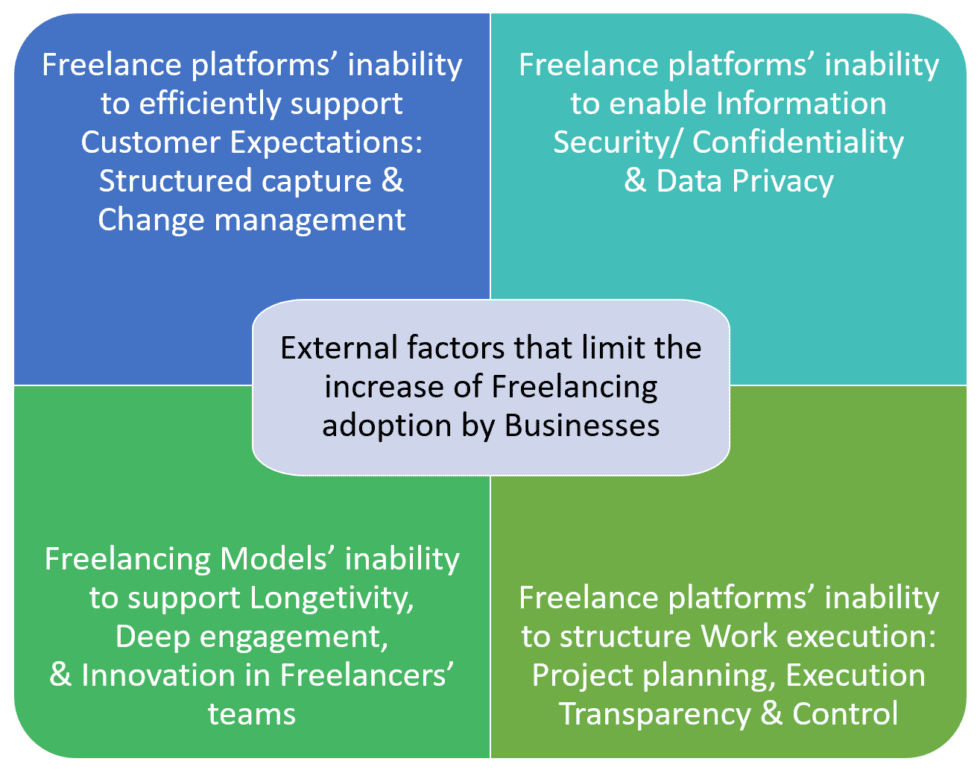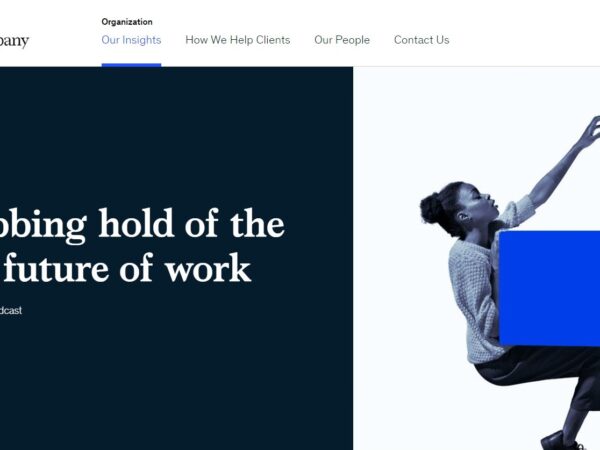Internal & External factors for assessing your preparedness for increasing Freelancing adoption
Roadblocks to increasing your Freelancing footprint may be categorized at a high level into:
– Internal to your business — meaning that your Business has to design & execute the actions needed to address these issues & their impacts to your Business, AND
– External to your business — meaning that the issue lies outside your environment, and the potential resolution of such issues may typically lie outside your business. Hence your Business would require additional steps to be put in place to ensure that the Business is covered from a control & efficiency perspective.
Internal factors
Business-Internal factors that may limit Business’ ability to improve their Freelancing footprint may be largely categorized as follows:

1. Availability of resources who can state the needs of the Business with appropriate detail/ clarity, such as Business Development representatives, Customer Care Agents, Technical Analysts, Business analysts, etc. These resources shall also verify the deliverables submitted;
Further, the availability of Management resources who can provide oversight to the team on the Job, ensure that work execution progresses as planned, and take corrective actions in case of deviations.
2. Process maturity of the Business organization indicates the clarity of work processes to the entire organization, and ensures that each person is clear about:
– What work to perform,
– The relevance of their work to the Organization’s Goals/ Objectives, Mission, Values, etc
– How to perform their work activities,
– What inputs to use from whom,
– How to report progress/ status,
– How to request for & receive needed support from others inside/ outside the organization, etc.
When adopting Freelancing, having clarity in the following areas would be highly beneficial:
– Vendor management: So that the Business can have a clear policy of choosing the right vendors, and quantitatively managing the relationship with each vendor, etc.
– Project Delivery & Acceptance management: So that the Business is clear about:
How projects are accepted into the work pipeline & approved for execution;
What Business value is to be expected from the Projects;
The approaches to be used to define your detailed Business needs & how to verify these once the work is completed;
Who would have responsibility of each of the actions;
The procedures, templates & tools to be leveraged for each action; etc.
– Financial management: So that the Business is systematically clear about its payables, receivables, cashflow, and runway.
3. Additionally, having prior experience in Freelancing would help in ensuring that your team has validated capability to handle such engagements, has identified potential pitfalls that may come up during execution, and has designed the right actions to contain the impact of such pitfalls.
This should ideally be handled on a graded curve; That is:
– If your Business already has experience executing large projects that require mixed teams of Freelancers & Business resources to execute projects, then you can even execute your strategic initiatives via Freelancing;
– If your Business has experience executing medium-sized jobs that require longer engagements of Freelancers & Business resources to execute your projects, then you can assess your preparedness to start execution of large projects via Freelancing;
– If your Business has experience executing small jobs that are typically executed by a single Freelancer in a relatively short duration of time, then you can assess your preparedness to execute medium-sized projects; and
– If your Business has no prior experience with Freelancing, it may be ideal that you start small, and execute pilot projects via Freelancing before you venture out to the execution of larger work via Freelancing.
The assessment of prior experience on Freelancing has been modeled in the “Freelancing Business Value Improvement Model”, which shall be described further in Part 3 of this article.
External factors
Business-External factors that may limit Business’ ability to improve their Freelancing footprint may fall into one of the four quadrants shown below:

- The inability of Freelancing to strongly enable security, confidentiality, privacy, etc
- The inability of Freelancing to drive longetivity, engagement & innovation in Freelancers’ teams
- The Freelancing platform’s inability to appropriately structure the definition of Customer expectations, leading to potential for expectations management mismatch
- The Freelancing platform’s inability to provide real-time visibility into work execution status
- The Freelancing platform’s inability to support detailed planning & governance of job execution
- The Freelancing platform’s inability to effectively handle Job scope changes & Solution changes during job execution
- The Freelancing platform’s inability to track delivered product/ service issues to closure, etc.
In case you missed the previous part of this article, you can access it here: Do you want to safely increase adoption of Freelancing in your Business? Assess your readiness first (Link).
The next part (3 of 3) of this article is here: A model for Businesses to qualify & quantify the adoption of Freelancing, and drive up efficiency and cost takeouts (Link).



